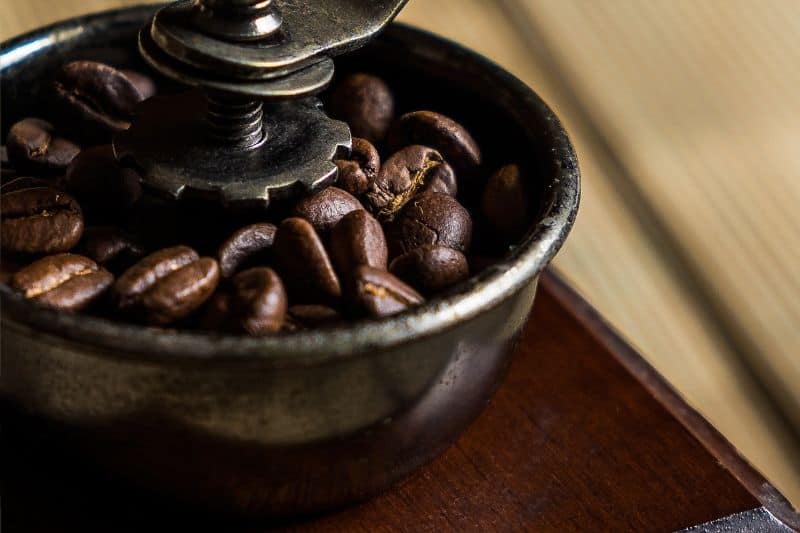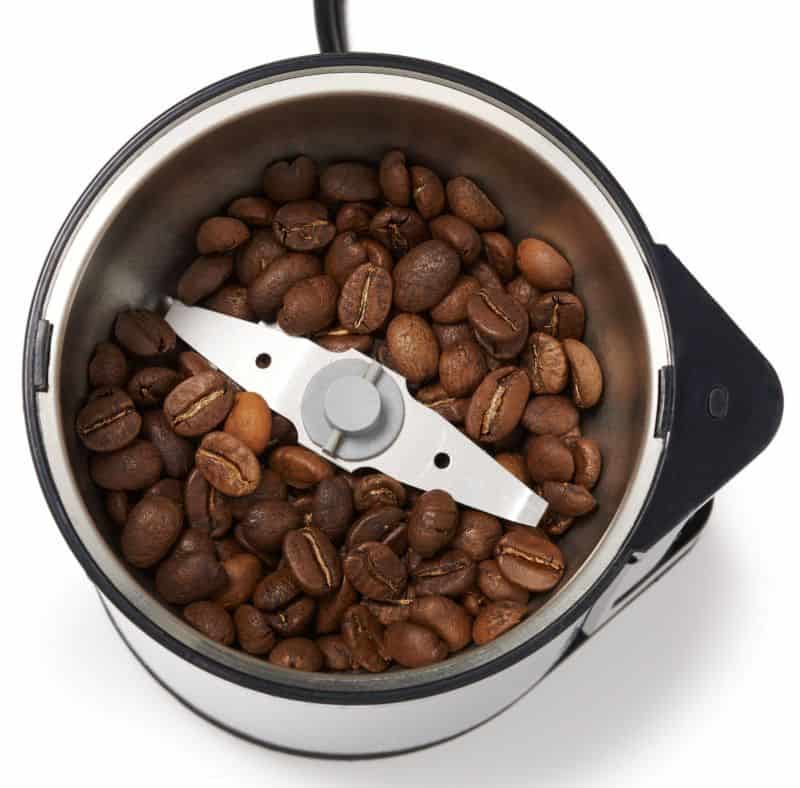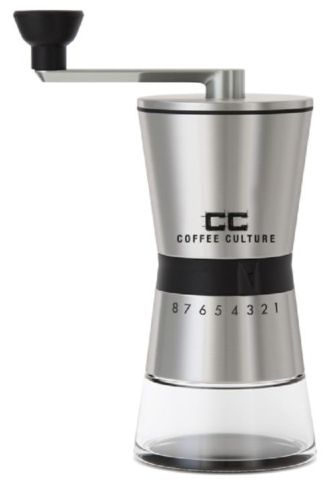Coffee Bean Grind Sizes, Cause It Does Influence The Taste. So you’ve heard off of the grapevine that the grind size makes a difference to your coffee, and you heard correctly. Making sure you have the right grind size for your brew method is key to making a good coffee.
Though this might seem like a trivial affair, believe us when we tell you that the size of coffee beans can truly influence the flavour of your daily cuppa. From a deeper taste to a more full-bodied aroma, there are many aspects of your favourite beverage that can be influenced just by the blend of the beans and their size.
We’ll show you why it matters, what grind you should be using for each brewing method, and what type of grinder to get.
Does Grind Size Even Matter For A Perfect Coffee Bean Grind Size?
It can affect the flavour and strength of your brew completely. For example, when I first started grinding my own coffee beans, I had a blade grinder (we’ll come back to different grinders later). A blade grinder is renowned for creating an uneven and quite coarse coffee grind.
Anyway, I ground up some coffee beans, put them into my Moka pot, and began to brew my coffee. It came out very weak with barely any flavor. I was so disappointed. There’s nothing worse than drinking a weak brew.
I compared the size of my own coffee grind, with that of the pre-ground coffee I was buying (which I got an amazing brew), and the only difference was the grind size.
Why Does It Matter?

Brewing a good cuppa is very much an art. Everything has to be taken into account to get that perfect flavor. Once you’ve started to drink coffee often, you’ll start to fine-tune how you brew your coffee, as you’ll notice subtle differences.
There are a few things that the grind size affects:
- Extraction rate – This increases the more the surface area is exposed. The higher the extraction rate, the less time the water needs to be in contact with the coffee.
- Surface area – To increase the surface area, you use a finer grind size.
- Flow rate – A finer grind size reduces the flow rate and increases contact time.
If you don’t understand that completely, don’t worry, it was hard to get my head around too. The bottom line is that the grind size is much more important than you first thought.
For example, a super coarse grind is good for a cold brew method, because it takes a long time for the coffee to fully brew. Compare that to an espresso, which doesn’t take a long time at all, you’re going to want a fine grind.
If your contact time is too long, or the grind is too fine for the brewing method, you’re going to over-extract your coffee. This creates a bitter taste, which isn’t a flavour many people like. If your coffee is too coarse, and contact time too short (my Moka pot experience I mentioned earlier), then the coffee will turn out weak.
Freshness
Once your coffee beans have been ground, because there is more surface area exposed to air, the beans start to lose their moisture and begin to lose their flavour. It’ll dry your ground coffee out, making it stale and bland. This won’t happen straight away, but it won’t take long before you start to notice your coffee starting to lose flavour. Ideally, you need to make sure all the air is squeezed out of the bag before storing it away.
This is why it’s rated to grind your coffee beans just before you make a coffee. Like they do in cafes, and it’s for a good reason. All the flavour is trapped inside the beans until you’re ready to make a cuppa with it.
The Different Types of Coffee Bean Grind Sizes

I’ll quickly run through the different grind sizes and show you which ones are suited for different brew methods.
Coarse
Coarse grinds are ideal for processes such as the French press, if you use a grind that’s too fine, you’re going to find ground coffee in your brew. It’s also good for any cold brew recipes, a vacuum coffee pot, or a percolator. Any process that takes a good length of time to brew.
- French press
- Cold-brew recipes
- Percolator
- Vacuum coffee pot
Medium
Drip coffee makers usually work well with a medium grind, but especially those that come with a flat bottom filter.
- Drip coffee makers (flat bottom filters, i.e. BUNN)
Fine
If your coffee maker has a cone-shaped filter, then you’re going to want to use a finer grind. This grind also works well in an espresso Moka pot.
- Drip coffee makers (cone-shaped filter, i.e. Cuisinart)
- Espresso Moka pot
Extra Fine
You’re only really going to want to use an extra-fine coffee grind with espresso machines, like the ones you see in a cafe. These brew espresso in under a minute, so the surface area needs to be large to create a flavourful extraction.
- Espresso machines
Turkish
You may not have even heard of a Turkish grind. You’ll only use this when making Turkish coffee, using a Turkish brew method, called an Ibrik. It’s not hugely popular yet, but the method is much of an art, producing amazing coffee that can be flavored with spices and whatever else you want to add.
- Ibrik method
Getting Yourself A Grinder for the Perfect Coffee Bean Grind Size
There are two types of grinders, and one is far superior to the other. A blade grinder, and a burr grinder.
Some coffee makers come conveniently with a built-in grinder, which makes the coffee you brew each morning of much higher quality, with no extra work.
Blade Grinders for Coffee Bean Grind Size

These guys work by having a dual-ended blade at the bottom of a chamber. You pour in your coffee beans, and the blade spins rapidly, smashing up the coffee beans that come into contact with it. The problem is, that not all the coffee beans get hit by the blade an even amount of times. This creates a separation of a finer grind at the bottom next to the blade and a coarser grind at the top.
The uneven grind size means that you’re going to get an unbalanced coffee extraction due to the dramatically different surface areas exposed to the water.
Don’t get me wrong. If you do have a blade grinder, or even plan on getting one, you’ll without a doubt notice the difference in the freshness and flavor of your coffee.
However, you are limited to what brew methods you want to use. A blade grinder doesn’t give you the option to change the grind size, so you’re stuck with brew methods that work well with a coarse grind.
Burr Grinder
Personally, I would recommend a burr grinder over a blade grinder any day of the week. They work by funnelling the coffee beans, a few at a time, into a chamber at the bottom of the container. There are two walls in this chamber with jagged surfaces. One moves, and the other doesn’t. The coffee beans are ground down between these two walls.

Because each coffee bean is directed into the chamber before passing through to the basket where the ground coffee is collected, it’s very uniform.
Not only that, but you can actually choose the distance between the two walls in the chamber. This means you can adjust the grind size to suit whatever brew process you want.
It may take a little bit longer to grind down the coffee beans this way, but it’s certainly worth it when you taste the difference in your coffee.
Final Words on Coffee Bean Grind Size
So there you have it. The grind size matters, and now you know which grind size is supreme for whatever brew method you prefer.
Believe us when we say that you will observe a difference if you just keep all our points in mind when grinding up your coffee beans. This is probably the smallest change that you can make that will seriously effect your early mornings.
If you can grind your coffee beans up fresh each morning, then I definitely recommend you give it a go. Don’t worry if you can’t, but making sure you get the right grind size is essential for a good brew.
